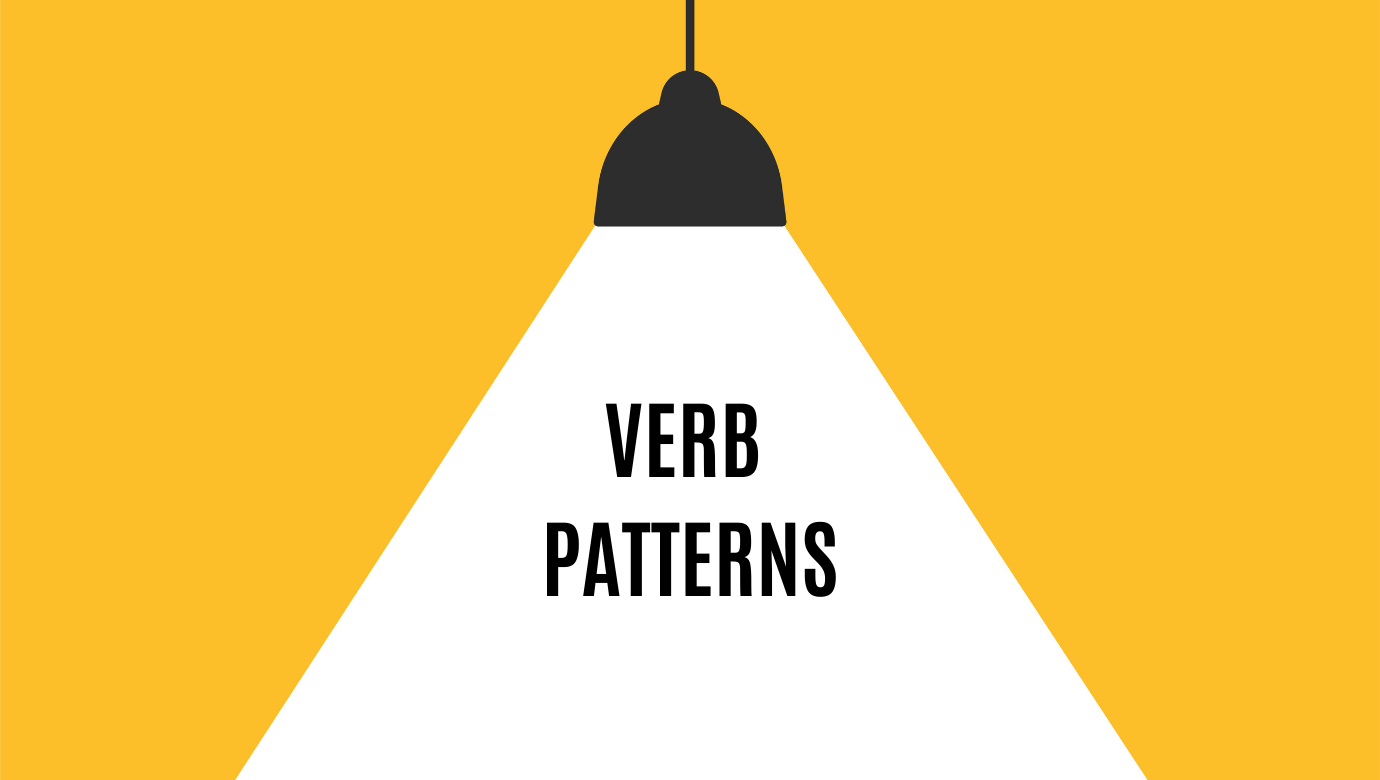Verb Patterns
Please stop to buy vegetables.
Please stop buying vegetables.
The sentences above sound the same but do they mean the same? No. It is because of the second verb used in the sentences. [first verb: stop; the second verb: ‘to buy’ / ‘buying’]
In the first sentence, the verb ‘to buy’ conveys the instruction to stop and buy vegetables.
In the second sentence, the verb ‘buying’ conveys the instruction to pause or discontinue the activity.
Different forms of the second verb change the meaning of the sentences completely. This happens because of something called a ‘verb pattern’.
Some of the commonly used verb patterns are as follows.
- Gerund
Consider the following sentence
I like walking at night.
In the above sentence,
There are two words that we usually use to describe an action : like & walk
The word, like is used as a verb that suggests that the subject “I” likes something, that something being ‘walking’.
So, the word ‘walking’ acts as a noun in the sentence.
In instances where an action word acts as a noun in a sentence, it is termed as ‘Gerund’.
A gerund looks like a verb but it actually is a noun, in the above example ‘walking’.
It is formed by adding -ing to the base form of the verb.
Example:
I enjoy talking to you.
Baking a cake is not easy.
Some common verbs and expressions that this verb pattern follows are, Stop, Enjoy, Mind, Suggest, How about, Avoid , etc
NOTE:
Verb + Preposition + gerund.
When an action verb is followed by a preposition, it is always a gerund.
Example:
There is no joy in celebrating festivals alone.
Nina was exhausted after trekking.
, etc.
‘To’ is also a preposition and there are some expressions that gerund is followed by
He is used to telling lies.
She is committed to fulfilling her dreams.
- Infinitives
‘Infinitives’ is a base form of the verb. There are two types of infinitives,
Verb + bare infinitive
It is an infinitive without ‘to’ or a verb in its bare form. It means ‘do’ something. It is used with all modal verbs.
Example:
I can speak Korean fluently.
You must go now.
Some verbs that this verb pattern follow are,
Let (someone/thing), make(someone), Have (someone), Would rather, Why not etc.
Verb + infinitive
The infinitive form of a verb is ‘to + base form of the verb’. It means ‘to do’ something. If you are sure, use this verb pattern.
Example:
I prefer to listen to music while studying.
I went to buy bread.
Some common verbs and expressions that this verb pattern follow are,
Would like . Want, Need, Decide, Can’t afford, It’s time, etc
NOTE:
There are some verbs and phrases that can use both gerund and infinitive. Some commonly used ones are,
Like, Love, Prefer, Start, Begin, Continue, Bother
- That clause
We use that as a conjunction to link a verb, adjective, or noun with the following clause.
Example:
How can you think that I’d forget?
I knew that he would pass the test.
That clause is used with reporting verbs like,
Believe, Accept, Agree, Show, Suggest, etc.
Some other verbs and expressions which that-clause follows are,
Convince (someone), Tell (someone), Remind (someone), Mention (prepositional phrase), Prove (prepositional phrase), etc.
The verb pattern to be used for the second verb in the sentence depends on the first verb. If you hear English regularly, you might already have a little understanding about which verb pattern to use. However, the above guidelines may help you understand the concept better. Try taking some quizzes to check your knowledge about the topic.


